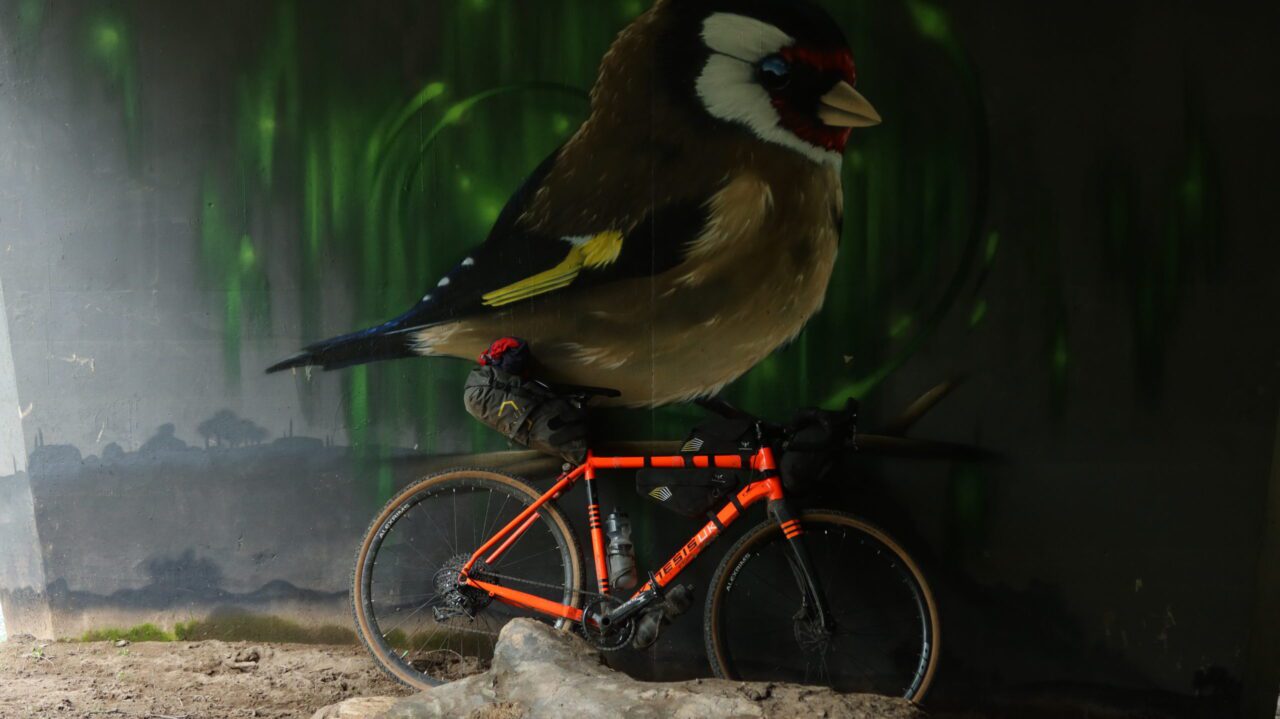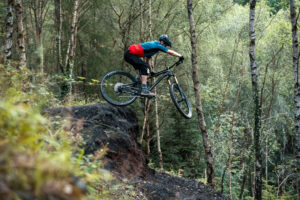How to plan and map a bikepacking adventure

For me, planning a bikepacking adventure is not only something that comes naturally, but also my job. After cycling a lap of the world, and hundreds of miles in various countries like Chile, Morocco, Kyrgyzstan, Argentina and Norway, I have now spent about five years planning longer shorter routes, mostly in Scotland, but also in Germany.
While the ‘perfect’ route doesn’t exist, and you either already know what you like and dislike on a bikepacking adventure, or collect this knowledge by doing a few trips yourself, I’ll share some insights from my perspective of running Bikepacking Scotland and Bikepacking Germany, and designing routes for projects like the Perthshire Gravel Trails or the Cateran Ecomuseum.
1 – Start with an idea
Most of my projects don’t start on a blank page. Most of my personal routes stem from an idea I had on a previous adventure. Other sources of inspiration are films or people I meet along the way. Closer to home, I often use signposts or interpretation boards as a start. Further away, I love reading books that tell a specific story or an account from someone else as an idea and centre my routes around that. Often there is a long delay between the original idea and actually making it happen. Centering your plan around something more than just cycling or beautiful scenery makes the project more compelling, and ultimately makes sure it happens.
The start of a new bikepacking trip idea – a mural on the River Tay Way
2 – Understand the legalities
Whether it’s rules on wild camping or which paths you can use, make sure you know the legalities of your actions. While Scotland or the Scandinavian countries have very good access rights, other countries have much more restrictions. Often a quick Google search will help you to find out more. Make sure the websites you are consulting are reliable sources, something which is more difficult if English isn’t used as an official language (e.g. in Morocco or Kyrgyzstan). While off-road access can be tricky, road access can differ in countries too, so make sure to consider this as well. And if you are still in doubt on your trip, the best thing to do is ask.
 Wild camping on the Highland Perthshire Drovers Trail in Scotland
Wild camping on the Highland Perthshire Drovers Trail in Scotland
3 – Be realistic
It doesn’t really matter where you are on your bikepacking journey. If this is your first bikepacking adventure or if you are an experienced racer or route planner like me – be realistic about what you can achieve. This is one of the skills that will grow with the number of trips you undertake, as your personal experiences will increase and guide you. If you have only ever cycled 10km and plan for 100km on your first bikepacking adventure each day, you are possibly setting yourself up for a very tough challenge.
4 – Use the resources out there, but tailor them to your own needs
I make a living with mapping routes, but I always see them more as a guide for others. Like a good blog post my routes are well-researched, and there are plenty of resources out there to guide your trip. Sites like Bikepacking Scotland, bikepacking.com, Bikepacking Germany, advntr.cc, perthshiregravel.com and the Cateran Ecomuseum offer really good routes. Cycling UK has created a number of long-distance bikepacking routes in the past year, and Sustrans comprehensive network of cycling routes is a good starting point too. In the UK Emma Kingston has just created a wonderful guidebook for bikepacking rides in England, and further away in New Zealand the Kennett Brothers have set the gold standard for amazing cycling guides. In Germany bikeline offers guide books in the shape of a map, which fit easily on the front roll. But instead of simply taking a route and riding it, I would suggest adding your own ideas into the mix too.
 Stopping to consider route alternatives in Highland Perthshire
Stopping to consider route alternatives in Highland Perthshire
5 – Learn to read a map
While route planning apps like Komoot will do a lot of work for you, being able to read and interpret a map is still an essential skill for planning a bikepacking adventure. I personally prefer Open Streets Maps, or the cycling specific equivalent Open Fiets Map, as their mapping is used worldwide. Ordnance Survey maps, or the app, are great tools as well, but they are specific to Britain. Being able to read a map will not only make the planning more fun, it will also help you to make much more informed decisions if you are out on a trip.
6 – Think about shortcuts
It’s great when things go to plan, but it’s much better if you have at least considered what could go wrong. A circular route often has natural short cuts, and it’s good to understand where they are before you set off. This will also make you aware of the sections of a route where there isn’t a viable Plan B. If you are entering a very remote part of your journey in the middle of a thunderstorm at night, it’s possibly best to stop and seek shelter. While in more urban environments looking for trains stations etc. along the route in advance will give you more confidence for the ride, and ultimately a better adventure.
 Bikepacking on the John Muir Way, Scotland
Bikepacking on the John Muir Way, Scotland
7 – The best place for bikepacking is the one you have for yourself
This is largely personal preference, but looking back to all my bikepacking trips, I enjoyed the places far away from crowds the most. Well-known tourist attractions often come with loads of people, and further issues like bike security. The more you are away from ‘civilization’, the tastier the pint is once you finally reach a pub. Less popular parts of countries often offer less developed tourist infrastructure, but they also tend to be the more welcoming places if you are on two wheels and offer better value for your money.
8 – Plan to the conditions
Seasonal weather conditions can have a massive impact on your bikepacking experience. A simple example is snow. While test riding the routes in the Cateran Ecomuseum Scotland experienced a lot of snow fall, which subsequently turned a normally fast-rolling and enjoyable gravel track into a long hike-a-bike adventure. And while remote and open hill areas were fine to ride already, more sheltered forest tracks kept the snow cover for longer. In other countries winter might be the perfect time to ride your bike, for example in Morocco, but daylight hours will still affect your experience.
 Bikepacking in snowy conditions, Cateran Ecomuseum, Scotland
Bikepacking in snowy conditions, Cateran Ecomuseum, Scotland
9 – Have a backup – Use a map or offline tools
Having a map as a backup is not always necessary, but I prefer to have my route on at least two devices which are accessible even when offline. If you are only going for an overnight adventure, a simple map can be the easiest to take. For longer, multi-day expeditions downloading routes and mapping onto your device makes sure you can navigate away from any mobile phone signal. I use Komoot and maps.me, and a separate set of maps for my Garmin eTrex20. And when a track sometimes doesn’t exist on one app or map, it usually can be found on another.

10 – Share with respect
It’s great to share your knowledge with others, as it enables other people with less experience to learn from your trip too. While I often share my routes, I make a more conscious decision of features I share online publicly. Once something surfaces online, it’s pretty much impossible to hide it again. A bothy possibly doesn’t exist on Komoot or maps for a good reason. That camp spot you chose might be great and acceptable if you are alone, but not if all of a sudden a large group of people rocks up. The same applies when you are on a journey. If you leave a place in the same or a better condition than you found it, then others can enjoy it in the same way you did.







